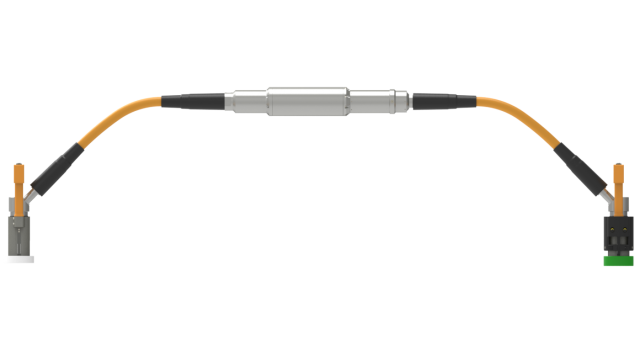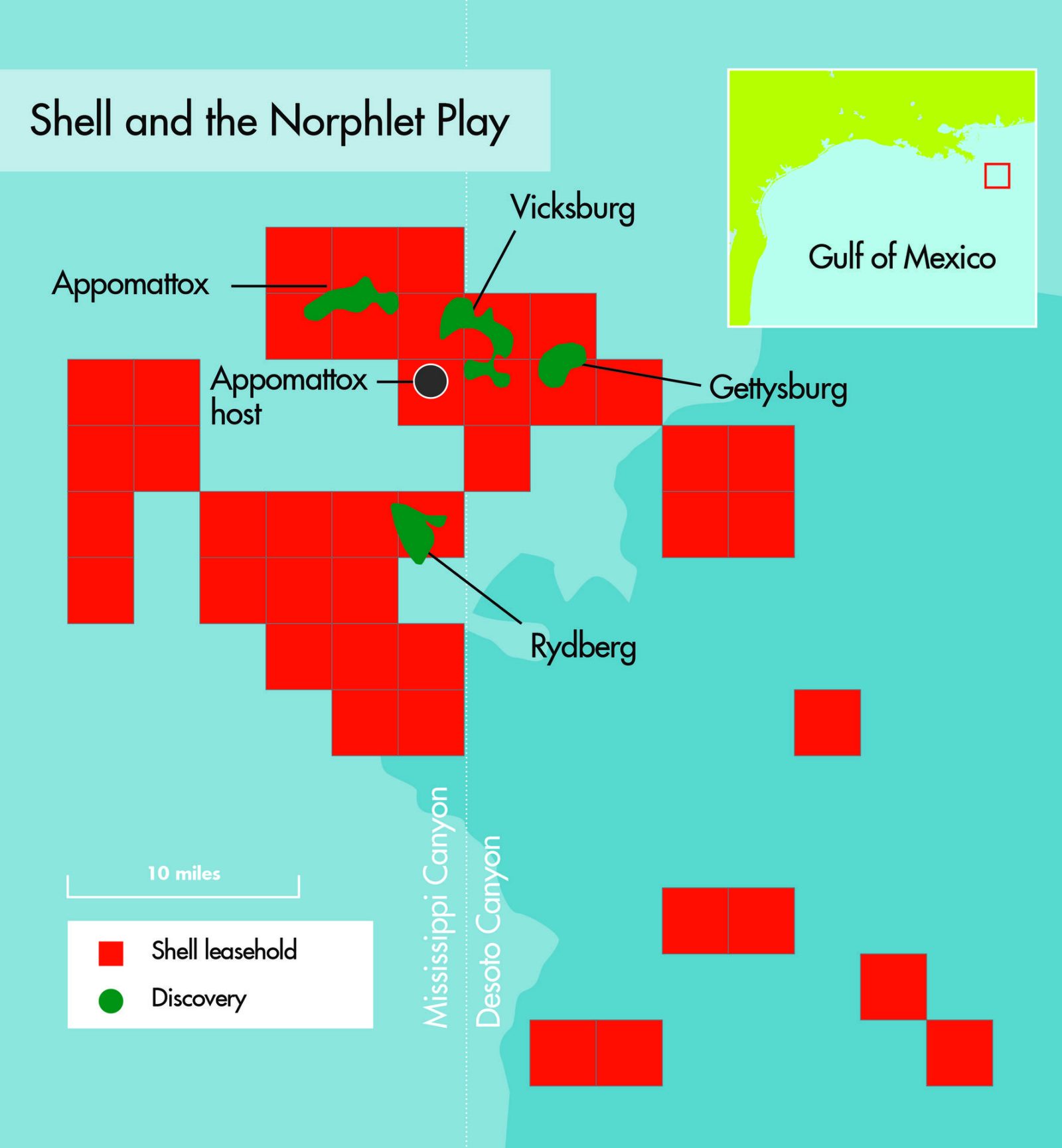
Teledyne’s electrical optical flying lead embeds electrical-to-optical conversion equipment into the subsea hose. (Source: Teledyne)
Tough times for the oil and gas industry have led offshore operators to subsea technology to help cut costs as many lean toward standardization and simplified yet innovative concepts.
Use of new electrical optical flying lead technology is among the design changes helping trim costs for the Shell-operated Appomattox development in the U.S. Gulf of Mexico’s Norphlet geologic trend. Unlike some of its fellow deepwater counterparts, Appomattox is progressing through the downturn, making it past the final investment decision stage in July 2015 with project costs down 20%.
Teledyne Marine is “participating strongly” in the Appomattox development with its electrical active flying lead and corrosion monitoring, Teledyne Marine President Mike Read said during the company’s Technology Focus Day recently held in Houston.
“Many of you are coming to us for new ideas on how to take costs out of the next-generation system. … We’ve been driving standardization factories that are more automated,” Read said. “We’re using tools such as product configuration to really simplify and standardize,” making customers’ jobs easier and more cost-efficient.
Shell has attributed cost savings at Appomattox to supply chain savings, lowering the number of well needs for the development and design improvements. New data transmission technology from Teledyne led to one of the design changes, according to the company.

The flying leads, or electrical and fiberoptic connections, include wet-mate connectors that are joined by subsea hose, providing a link from the topside facilities to subsea control modules on the seabed, Teledyne explained on its website. Such connections are needed for each well to power subsea equipment and transmit data.
“New flying lead technology now has the ability to embed electrical-to-optical conversion equipment into the hose itself, removing the need for some of the routing modules on the seabed,” Teledyne said. “A new product with this technology, an electrical optical flying lead, will provide a direct link from topside to a subsea control module to transmit data regarding pressure, temperature, flow rates, equipment health and a host of other functions while at the same time streamlining the field architecture into a simple, cost-effective layout.”
Teledyne Marine will provide more than 40 electrical optical flying leads needed for the development, which calls for a semisubmersible unit, four-column production host platform and a subsea system with six drill centers along with 15 producing wells and five water injection wells. The development, in which Shell has 79% interest with partner Nexen Petroleum Offshore USA holding 21%, is located at a water depth of 2,195 m (7,200 ft) in the Mississippi Canyon and Desoto Canyon areas.
The electrical optical flying lead technology is one of many ways Teledyne is putting R&D efforts to work.
The company is bringing in record R&D dollars despite market conditions, Read said, noting the figure peaked at $13 million in 2015.
“We’re increasing our global presence, we’re deepening our customer partnerships [and] we’re focused on factory consolidation centers of excellence. We will be the cost leader,” Read said. He challenges the Teledyne team to “think bigger, be bolder and speed it up. … At Teledyne Marine, we’re moving from defense to offense.”
Looking forward
Another division of the company, Teledyne Scientific & Imaging, also is making strides in areas that could benefit the subsea oil and gas sector.
The company is applying machine learning technology to its sensors. The goal is to embed learning capabilities in sensors, said Berinder Brar, president of Teledyne Scientific & Imaging.
One of Teledyne’s sensor companies also has taken visible infrared imagery and fused it, making it possible to get infrared information in the context of a typically recognizable image, Brar said.
“Algorithms are getting more sophisticated, and this is going to change the way the world will be in the future,” he said. “As an industry we have to learn to utilize these sensors better as well as be able to take information out of the sensors and make more efficient and lower cost alternatives.”
Teledyne Scientific also has worked with the Defense Advanced Research Projects Agency (DARPA), part of the U.S. Department of Defense, and North Carolina State on drone technology, developing an unmanned aerial vehicle that can fly out of water and land in water.
In addition, there is a new material coming out—also funded by DARPA—called gallium nitride (GaN), a semiconductor material with a large band gap that is capable of operating in high temperatures, Brar said.
“New materials like gallium nitride can be very, very important for the future of oil and gas,” he added. GaN can operate at high temperatures and at high frequencies and also can handle high voltages. “It allows you to take power supplies and compact them significantly. We’re doing work on gallium nitride at Teledyne as well,” he said.
Contact the author, Velda Addison, at vaddison@hartenergy.com for more information.
Recommended Reading
International, Tech Drive NOV’s 2Q Growth Amid US E&P Headwinds
2024-07-29 - Despite a U.S. drilling slowdown, slightly offset by Permian Basin activity, NOV saw overall second-quarter revenue grow by 6%, although second-half 2024 challenges remain in North America.
Salunda, Intellilift Enter Pact to Optimize Automation in Well Construction
2024-08-21 - The agreement was signed following a successful pilot trial integrating Intellilift’s digital technologies with Salunda’s patented camera and wearable red zone monitoring solutions on a drilling rig.
Transocean Contracted for Ultra-deepwater Drillship Offshore India
2024-09-04 - Transocean’s $123 million deepwater drillship will begin operations in the second quarter of 2026.
E-wireline: NexTier Taps Oilfield Grid, Automation for Completions
2024-07-23 - NexTier Completion Solutions is using advanced electric-drive equipment, automation-enabled pump down technology and digital connectivity to optimize wellsite operations during shale completions.
Safety First, Efficiency Follows: Unconventional Completions Go Automated
2024-07-18 - The unconventional completions sector has seen a tremendous growth in daily stage capacity and operation efficiencies, primarily driven by process and product innovations in the plug and perf space.
Comments
Add new comment
This conversation is moderated according to Hart Energy community rules. Please read the rules before joining the discussion. If you’re experiencing any technical problems, please contact our customer care team.






